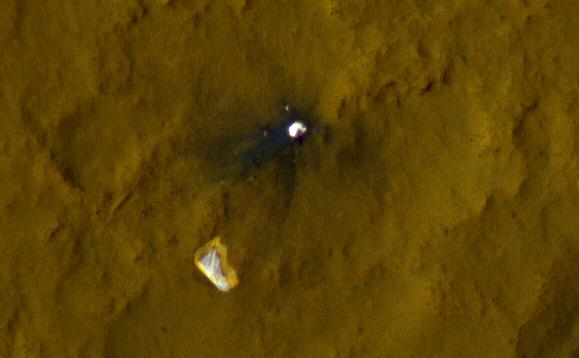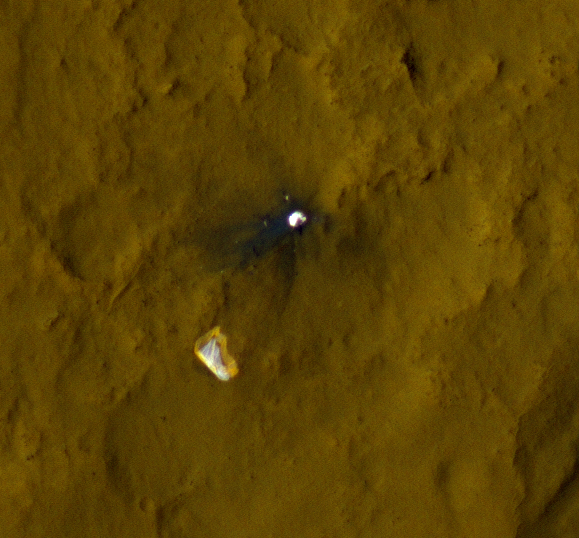Relics of Rover’s Landing

| Credit | NASA/JPL-Caltech/Univ. of Arizona |
|---|---|
| Language |
|
This color view of the parachute and back shell that helped deliver NASA's Curiosity rover to the surface of the Red Planet was taken by the High-Resolution Imaging Science Experiment (HiRISE) camera on NASA's Mars Reconnaissance Orbiter. The area where the back shell impacted the surface is darker because lighter-colored material on the surface was kicked up and displaced.
The full image for these observations can be seen at http://uahirise.org/releases/msl-tracks.php .
HiRISE is one of six instruments on NASA's Mars Reconnaissance Orbiter. The University of Arizona, Tucson, operates the orbiter's HiRISE camera, which was built by Ball Aerospace & Technologies Corp., Boulder, Colo. NASA's Jet Propulsion Laboratory, a division of the California Institute of Technology in Pasadena, manages the Mars Reconnaissance Orbiter Project for NASA's Science Mission Directorate, Washington. Lockheed Martin Space Systems, Denver, built the spacecraft.

